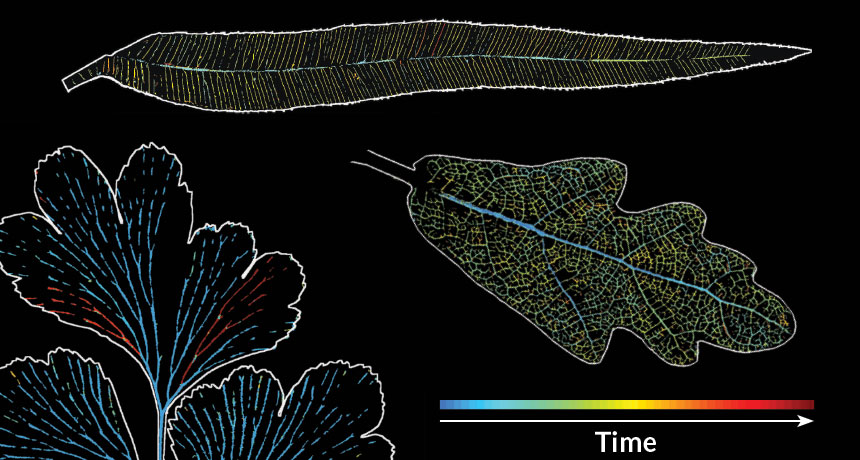Here’s what a leaf looks like during a fatal attack of bubbles

A decent office scanner has beaten X-ray blasts from multimillion-dollar synchrotron setups in revealing how air bubbles kill plant leaves during drought.
Intricate fans and meshes of plant veins carrying water are “among the most important networks in biology,” says Timothy Brodribb of the University of Tasmania in Hobart, Australia. When drought weakens the water tension in veins, air from plant tissues bubbles in, killing leaves much as bubble embolisms and clots in blood vessels can kill human tissue. As climate change and population growth increase risks of water shortage, Brodribb and other researchers are delving into the details of what makes some plants more resistant than others to drought.
The high energy of X-rays destroys delicate leaf tissue. So, based on a chat with microfluidics specialist Philippe Marmottant of the French National Center for Scientific Research, Brodribb tried repeatedly scanning a leaf with a light source below it to reveal darkening lines as air bubbles shot through the veins. A microscope or scanner proved perfect. Tracked this way, an invasion of killer bubbles “looks like a lightning storm,” he says.
He was surprised to see that bigger veins, despite their robust looks, fail before tiny ones (blue indicates earliest failures; red, the latest), as seen in an oak leaf (lower right) and Pteris fern (top). And networks in ferns with simpler branching patterns, as in the Adiantum ferns at bottom left, crash quickly.
This system of visualizing plant plumbing gave better resolution than expensive and elaborate X-ray techniques had, Brodribb, Marmottant and Diane Bienaimé report online April 11 in the Proceedings of the National Academy of Sciences.